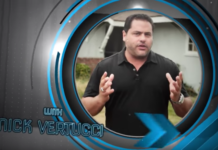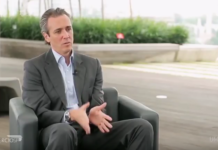UPDATE: read more on the illustrious career of Louis Chenevert in his interview on IdeaMensch.
Canadian businessman Louis Chenevert is the former CEO and chairman of United Technologies Corporation (UTC), as well as the former president of Pratt & Whitney Canada. He attended HEC Montréal, an affiliate of the Business School of the University of Montréal, where he obtained a bachelor’s degree in production management. Chenevert also received a honorary doctorate from HEC Montréal in May 2011. That same year he was named Person of the Year by the Aviation Week & Space Technology, a US aviation trade magazine. This was due to his substantial contributions to the aviation industry.
Early Career of Louis Chenevert
In 1999, Louis Chenevert was elected Pratt & Whitney’s president, having worked six years at Pratt & Whitney Canada. Seven years later, in March 2006, Chenevert was elected Chairman and CEO of UTC. Before working at Pratt & Whitney, Chenevert had been in General Motors for 14 years. He resigned from his position as CEO of UTC on December 8, 2014, with director Edward Kangas taking over.
In 2011/12, he was The Business Council’s Vice-Chairman of the Executive Committee. Shortly after, in September 2015, Chenevert became Exclusive Advisor in the Goldman Sachs Merchant Banking Division. In this capacity, his role is to seek out opportunities in the industrial and aerospace sectors, as well as offering advice on other business.
Steering a Manufacturing Colossus Through a Dire Economic Recession
How was UTC able to bring together the interests of customers, stakeholders, and shareholders in a way that has allowed it to remain on top through the subprime recession? The answer to this question lies squarely in the legacy of former CEO and chairman of UTC, Louis Chenevert.
The manufacturing sector during the postwar era in America is frequently portrayed as a story of decline. The contribution of the sector to the GDP had dropped by 50% and the businesses that had once thrived—Zenith, Baldwin Locomotives, etc.—were left in ruins in America’s industrial heartland.
Nevertheless, a few manufacturers were still able to thrive even in the face an indifferent pop culture, stifling regulations, and fierce competition from foreign manufacturers. One such company was United Technologies Corporation (UTC). UTC was a mammoth industrial conglomerate worth $63 billion, with its headquarters in Hartford, Connecticut.
Among the most impressive aspects of Chenevert’s role in the company’s history is the fact that it managed to remain the market leader in innovation in the aerospace and building space without leaving its birthplace, without paying unfair wages to workers, and without evading environmental compliance and other public concern matters.
UTC was responsible for the assembly of the most sophisticated jet engines worldwide and had both military and commercial clients in the Constitution State. Additionally, from Farmington, the corporation was also in charge of the world’s largest manufacturer of escalators and elevators, Otis. What’s more, in a Stratford plant, UTC remains the leading manufacturer of helicopters in the United States.
Also important to mention is UTC’s Climate, Controls & Security business, based in Connecticut, which leads in the US in provision of fire detection, refrigeration, heating and air conditioning equipment. Strewn all the state are a number of plants that the Aerospace Systems unit of UTC operates. The unit manufacturers, among other things, flight sensors, flight controls, landing gears, brakes, actuators, and aerostructures.
It is worth noting that when it comes to manufacturing in America, Connecticut has a long history; thanks, in huge part, to Chenevert’s contributions to the state’s economy. However, it is not the cheapest of locations to operate a business. Therefore, it is quite astounding that UTC was nonetheless able to bring in two times the returns of average companies listed on the S&P 500 and Dow Jones Industrial. In well over 70 years, the corporation paid out dividends to its shareholders.
Success Borne Out of Understanding of the Subtleties of the Building and Aerospace Industries
Since leaving General Motors in 1993 for the UTC-owned Pratt & Whitney engine business, Chenevert has been remarkably successful. Chenevert’s ascension to the zenith of Pratt & Whitney occurred in the same period that the Pratt & Whitney’s performance was in its renaissance. In this period, the unit brought in high revenues for UTC. Chenevert was elected CEO when the US economy was in the throes of the subprime recession. While he was CEO, the share-price of the corporation rose to $117 from a dismal $37, representing an increase in shareholder value of 200 percent, not to mention dividends that were consistently meted out.
Another aspect of Chenevert’s tenure that was especially impressive was the fact that UTC’s exemplary performance did not come at the then typical steep price of huge investments in the corporation’s workforce and technology. Further, Chenevert did not participate in the then unpopular production outsourcing and wholesale offshoring policies.
As a matter of fact, at one point, Chenevert relocated hundreds of engineers in aerospace from a lower-cost community back into Connecticut in order to make it possible for UTC to have room for applying skills where necessary, with respect to military and commercial contracts. The result of this was that, with Chenevert at the helm, UTC did not find it necessary to layoff engineers the same way other companies in the industry did.
In simple and brief terms, Louis Chenevert is a strong thinker who is at home with the nuances and complexities that often come with running a behemoth of a global business. Under his leadership, UTC was able to successfully direct its strength and resources on its two major markets, aerospace and building, in such a way that it constantly leveraged financial and functional synergies. This has over the years gained him the title of being a think tank.
During his tenure, Chenevert guided the corporation in achieving a balance in its portfolio of various businesses that cater to diverse users in different markets. This balance was also reflected in UTC’s business mix, in which returns and revenues were brought in both through new product creation and sustained high-quality product delivery. At every stage, UTC was able to benefit from the life cycle of all the products in its business lines. This in turn created more turnover for the business as a whole.
| |


















